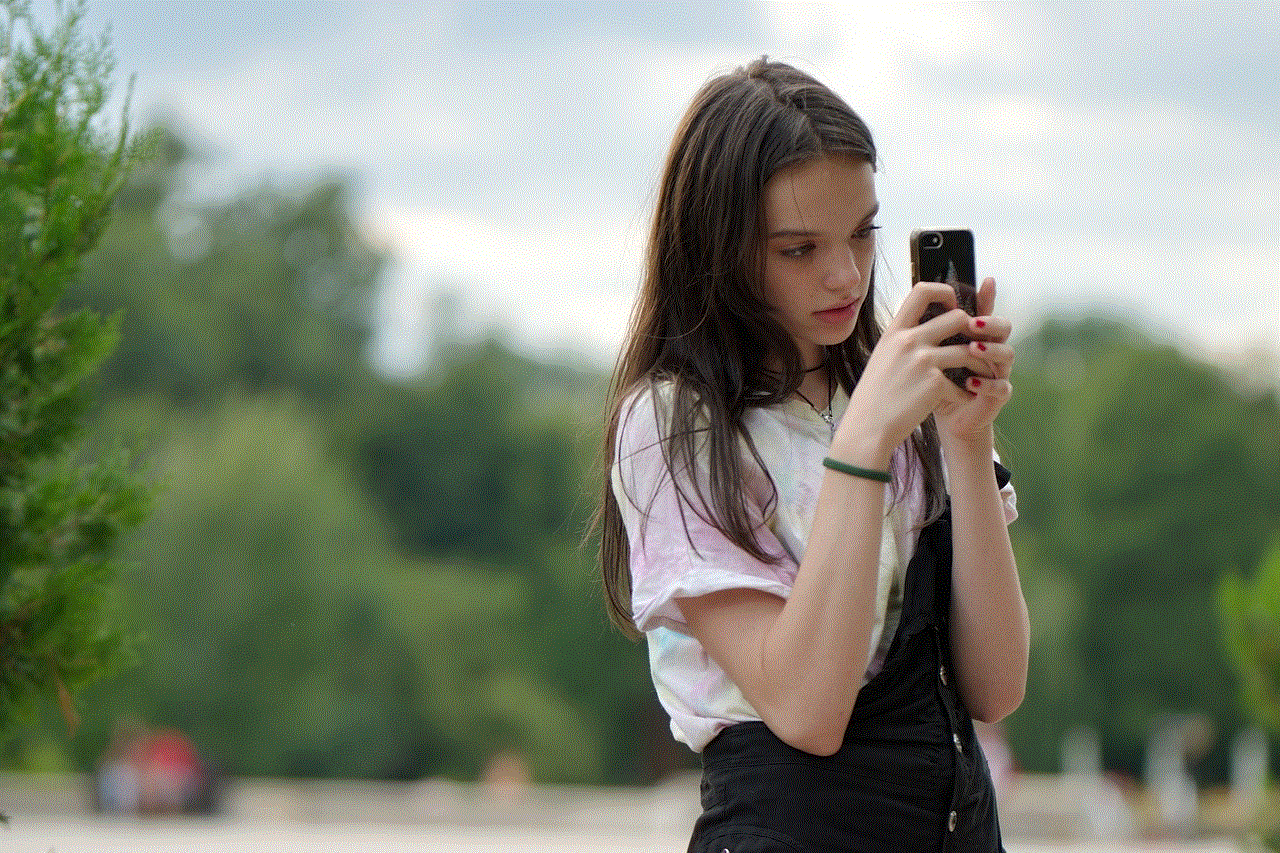how to block a website on iphone
In today’s digital age, the internet has become an integral part of our daily lives. With just a few clicks, we can access a vast amount of information and connect with people from all around the world. However, with this convenience also comes the potential for harm. There are certain websites that can be harmful or distracting, especially for children and teenagers. As a parent or guardian, it is important to have control over the content that your child can access on their iPhone. In this article, we will discuss how to block a website on an iPhone to ensure the safety and well-being of your loved ones.
1. Understand the Risks of Unrestricted Internet Access
Before we dive into the steps of blocking a website on an iPhone, it is important to understand the risks of unrestricted internet access. With the rise of social media and online platforms, there has been an increase in cyberbullying, exposure to inappropriate content, and online predators. By blocking certain websites, you can protect your child from these potential dangers and ensure that they are only accessing age-appropriate content.
2. Use Built-in Restrictions on iPhone
The iPhone comes with built-in restrictions that allow you to block certain websites. To access these restrictions, go to the Settings app and tap on “Screen Time”. From there, tap on “Content & Privacy Restrictions” and enable the feature by tapping on the toggle button. You can then go to “Content Restrictions” and select “Web Content”. From here, you can choose to restrict access to certain websites by adding them to the “Never Allow” list.
3. Use Third-Party Apps
There are also third-party apps that you can download on your child’s iPhone to block specific websites. These apps often come with additional features such as time limits and activity monitoring. Some popular options include Net Nanny, Norton Family, and Kidslox. These apps can be downloaded from the App Store and are relatively easy to set up and use.
4. Consider Using a VPN
A Virtual Private Network (VPN) is a tool that can be used to block websites on an iPhone. A VPN works by routing your internet traffic through a secure server, making it difficult for anyone to track your online activities. Some VPNs also come with a feature that allows you to block certain websites. However, it is important to note that using a VPN may slow down your internet speed, so it may not be the best option if your child needs to access the internet for school or other purposes.
5. Use Parental Control Software
Parental control software is another option for blocking websites on an iPhone. These software programs allow you to monitor and restrict your child’s online activities, including the websites they can access. Some popular options include Kaspersky Safe Kids, Qustodio, and FamilyTime. These software programs often come with a monthly or yearly subscription fee, but they offer comprehensive features for monitoring and controlling your child’s internet usage.
6. Enable Safe Search
Search engines such as Google and Bing have a safe search feature that can help filter out inappropriate content. By enabling safe search, you can ensure that your child is not exposed to explicit or harmful content when they are searching for something online. To enable safe search on an iPhone, go to the Settings app and tap on “Safari “. From there, scroll down and tap on “Search Engine”. You can then select “Strict” under the “Safe Search” option.
7. Use Restrictions on Safari
If your child primarily uses the Safari browser on their iPhone, you can also restrict access to certain websites directly from the browser. To do this, open Safari and tap on the “Tabs” icon at the bottom right corner. From there, tap on the “Private” option and select “Settings for This Website”. You can then toggle on the “Restrict Website” option and add the website URL that you want to block.
8. Utilize Router Settings
Another way to block websites on an iPhone is by utilizing your router’s settings. This method will not only block the website on your child’s iPhone but also on any other device connected to your home Wi-Fi network. The steps to do this may vary depending on your router, but generally, you can access the settings by typing the router’s IP address into your web browser. From there, you can add the website URL to the “Block Sites” list.
9. Talk to Your Child
While blocking websites on an iPhone is an effective way to protect your child from harmful or distracting content, it is also important to have open and honest communication with them. Talk to your child about the potential risks of unrestricted internet access and educate them on how to stay safe online. By having a conversation with your child, you can also understand their online habits and address any concerns or issues they may have.



10. Regularly Monitor Internet Usage
Lastly, it is important to regularly monitor your child’s internet usage, even after implementing these measures to block certain websites. This will allow you to ensure that the restrictions are working effectively and make any necessary adjustments. It is also a good opportunity to have conversations with your child about their online activities and address any concerns that may arise.
In conclusion, the internet can be a wonderful tool for learning and connecting, but it also has its dangers. As a parent or guardian, it is your responsibility to protect your child from harmful or inappropriate content. By following the steps mentioned in this article, you can effectively block websites on an iPhone and ensure a safer online environment for your child. Remember to have open communication with your child and regularly monitor their internet usage to ensure their safety and well-being.
code word for sex
Sex. It’s a word that carries so much weight and meaning. It’s a word that can evoke different emotions and reactions from different people. For some, it’s a taboo subject that is not often discussed in public. For others, it’s a source of pleasure and intimacy. But no matter what your personal beliefs and attitudes towards sex may be, one thing is for sure – it’s a fundamental aspect of human nature.
And with that, comes a whole set of code words and phrases that people use to refer to sex. Some are subtle and widely known, while others are more obscure and only used within certain groups or communities. But what exactly are these code words for sex? And how have they evolved throughout history? In this article, we’ll take a deep dive into the world of code words for sex and explore their origins, meanings, and usage.
Let’s start with the most commonly used code word for sex – “the birds and the bees.” While this phrase may seem innocent and even comical, its origins can be traced back to the 1700s. In those times, birds and bees were seen as symbols of fertility and reproduction. So when parents wanted to explain the concept of sex to their children, they would use these animals as a metaphor. This code word has stood the test of time and is still used today, although it may be seen as outdated by some.
Another popular code word for sex is “getting lucky.” This phrase is often used to refer to the act of having sex, but it can also be used to describe any fortunate or successful event. Its origins are unclear, but it’s believed to have originated in the 1960s when the sexual revolution was in full swing. It was a way for people to talk about sex without actually saying the word, which was still considered taboo at the time.



One of the more explicit code words for sex is “hooking up.” This phrase gained popularity in the 1990s and refers to engaging in sexual activity with someone. However, the term has evolved over the years and can now also refer to simply making out or kissing. Its origins are rooted in the gay community, where it was used to describe casual sexual encounters. But now, it’s a widely used code word among all genders and sexual orientations.
“Netflix and chill” is another code word that has become popular in recent years. It’s often used as a way to invite someone over for a casual sexual encounter, while also implying that there will be some Netflix involved. This phrase has become so popular that it’s even been turned into a meme and has been used in mainstream media. Its origins can be traced back to a song by rapper K Camp in 2014, which had the line “Netflix and chill, just you and me.” Since then, it has taken on a whole new meaning and has become a staple in modern dating culture.
Moving on to more subtle code words, “bow chicka wow wow” is a phrase that is often used as a euphemism for sex. It originated in the 1970s and was popularized by the TV show “Happy Days,” where the character Fonzie would often say it. The phrase is believed to imitate the sound of a guitar riff often used in pornographic movies, making it a subtle way to reference sex without being too explicit.
“Doing the deed” is another commonly used code word for sex. It’s a phrase that is often used in a joking manner, but its origins are actually quite serious. It dates back to the Middle Ages when the term “good deed” was used to refer to sexual intercourse within marriage. Over time, the phrase evolved to simply “the deed,” and it’s now used to refer to any sexual activity.
One of the more creative code words for sex is “horizontal tango.” This phrase combines the idea of dancing and being horizontal, which is often associated with sexual activity. It’s a playful way to talk about sex without being too explicit, and it has gained popularity in recent years. Its origins can be traced back to the 1920s, where it was used in jazz music to refer to dancing in a provocative manner.
Another phrase that has been around for decades is “making whoopee.” This code word has its roots in jazz and blues music of the 1920s and was often used to refer to having sex. Its origins are unclear, but it’s believed to have been coined by African American musicians. The word “whoopee” itself is a representation of the sound of a trumpet, which was often used in jazz music.
“Rolling in the hay” is a phrase that is often used to refer to sex in a more lighthearted and playful manner. Its origins can be traced back to the 1800s when farmers would often roll around in the hay to have sex with their partners. It was a way for them to be discreet and avoid being caught in the act. Today, the phrase is still used in a similar context, but it can also be used to describe any sexual activity.
“Doing the horizontal mambo” is another creative code word for sex. It combines the idea of dancing and being horizontal, similar to the “horizontal tango.” It’s a phrase that has gained popularity in recent years, and its origins can be traced back to Latin American culture. The mambo is a type of dance that originated in Cuba, and the phrase was popularized by the song “Mambo No. 5” by Lou Bega in 1999.



Last but not least, “bumping uglies” is a crude and humorous phrase that is often used to refer to sex. It’s a phrase that is believed to have originated in the 1970s and is often used in a joking manner between friends. Its origins are unclear, but it’s believed to have been coined by college students. The phrase may not be the most tasteful, but it has stood the test of time and is still used today.
In conclusion, code words for sex have been around for centuries and have evolved with society’s attitudes towards sex. They have been used as a way to talk about a taboo subject without being too explicit, and they have become a part of our everyday language. From the innocent “birds and the bees” to the more explicit “hooking up,” these code words have a rich history and continue to be used in modern times. So the next time you hear someone talking about “Netflix and chill,” you’ll know exactly what they’re referring to.
